Tosh Berman's Blog, page 204
December 19, 2014
December 19, 2014
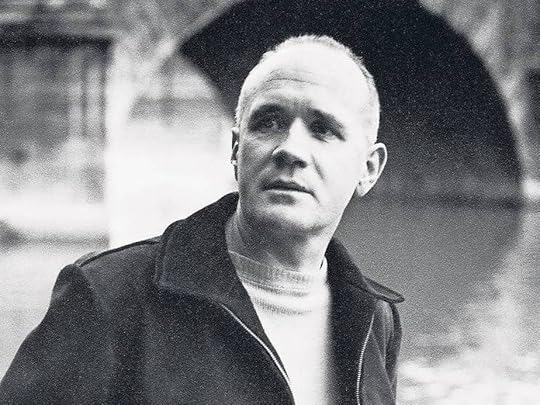
December 19, 2014
Life is not hard, but the air is pretty thin. I can’t see the sunshine due to the clouds, but I know it is up there somewhere. And I know she’s around as well, I just… well, can’t see her at the moment. Nevertheless I wrote her a letter, but damn, I remember I don’t have the address. Being silly, I just mailed it out and put my address on it. Sometimes I feel like I’m playing a role, but without a script and no clear direction. “Acting is the ability to dream on cue.” I’m just looking for that sign to start performing.
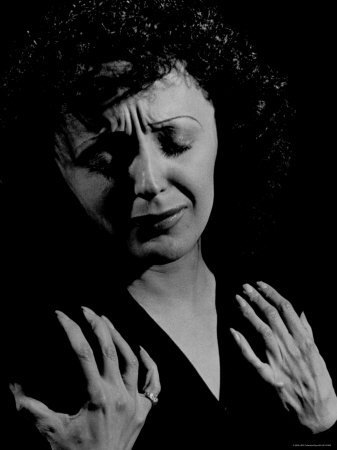
I'm kind of nervous being on stage, because I can’t see the audience or the floorboards. I do things blindly. “Singing is a way of escaping. It’s another world. I’m no longer on earth.” Often I don’t feel I belong here. Nothing is familiar, nothing is there, because she’s not here. Therefore where am I?
I want to peel the orange, but the juices run down my chin. I bite the skin, and tear it off gently, to make sure I get at the very least its nutrients. “To achieve harmony in bad taste is the height of elegance.” Whenever I eat anything messy, I always put on my best suit on. I’m honest in that sense. A performance is honesty at work. “The most precious things in speech are pauses.” It is what she doesn’t say, that rings so loudly in my ears and heart. Therefore in honesty, she just not being here, speaks volumes to me.
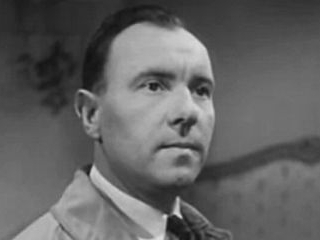
My head is the place where my home is. Because this physical existence is not happening right now. When I walk the streets, everyone looks at me like I’m past-tense. I avoid the reflections, because it’s too painful, to watch my demise. It is better to walk through a glass door, then opening it. I have seen the flowers that are offered by the street vendor, and I know they were pulled out of the earth quite violently. I can’t give those flowers as a gift, with that much tension attached to it. It doesn’t seem right. But then, when you’re at the end of the street, what does it matter anymore?
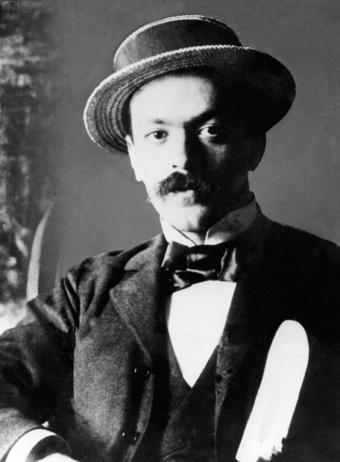
I’m at the edge of the world, and I haven’t even left the bedroom. The heavy curtains are drawn. No light and no safety lights to lead me to an exit. I hear the echo of my voice as I scream down the hallway, and there is nothing more profound when nothing is there. I go back to bed. I go back to that world. “A man must dream a long time in order to act with grandeur, and dreaming is nursed in darkness. ” As I understand it, "you see things less clearly when you open your eyes too wide."
Published on December 19, 2014 11:23
December 18, 2014
December 18, 2014
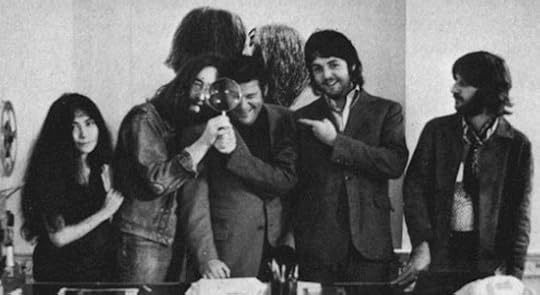
December 18, 2014
“Though I walk in the shadow of the valley of evil, I have no fear, as I am the biggest bastard in the valley.” Since I loved music ever since I was a kid, I decided to go into the music business. I was a musician, but I often felt I was in the hands of those who don’t care about me or my music. When I was with the band, “we toured non-stop for three years, doing 300 gigs a year and we hardly got a penny.” Therefore I have made the decision to never let another hand touch my music or my career. On the other hand, I will clearly touch other’s in the same manner that I was abused - and why not, what comes around goes around. I don’t mind the fucking, by the way, I just don’t want to get fucked anymore.
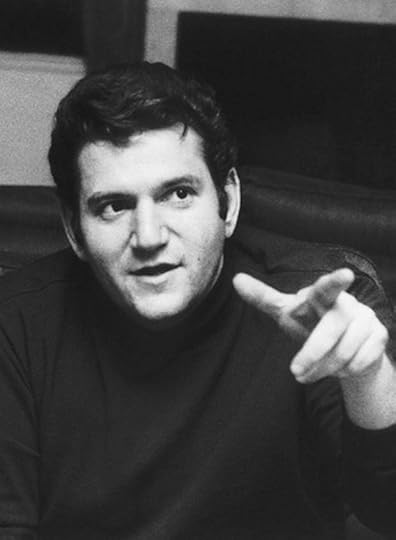
What’s imperative is to own properties. The difference between a loser and a winner, is one who obtains an object instead of borrowing that item. Therefore it is preferable to own an “artist” than work for him or her. I made sure I purchased the publishing rights, and this is the gray area, be beneficial to your artists, because they tend to bite back. For instance, I have never met a grateful “artist,” but surely have dealt with dissatisfied ones' on a regular basis. Also you have to continue to watch out for them, meaning to make sure they don’t find a better deal out there on their own.
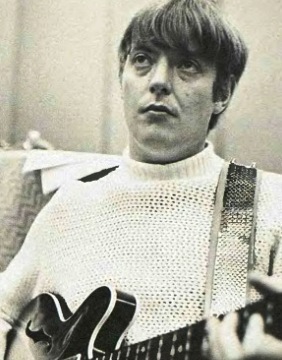
The best one’s that I have worked with are usually paranoid (rightfully so) and greedy. The combination of those two ingredients is like the perfect mixed cocktail for me. I just step in and offer them power (or whatever that word means to them) and an ego-boost. I never interfere with the music-making, because that is what they do - I just take care of their world around them so they can fully concentrate on doing their art. Which in turn fills my little piggy bank on my desk.
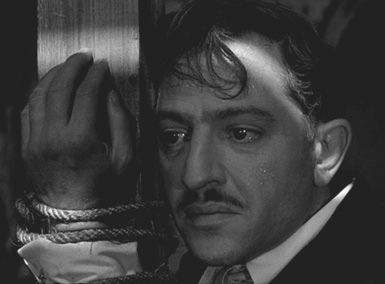
I’m not a huge film fan, because I feel it’s a waste of time sitting in a dark movie theater or screening room - I can almost count the missing dollars I would be making if I wasn’t in that room. Nevertheless John, one of my ‘artists, ’ suggested that I buy the rights to a film made by Chilean director - and it was a wise investment move. I came up with the idea of him directing a film version of “The Story of O,” but at the last minute he pulls out of the project. After purchasing the film rights, which are now useless to me, I decided to pull every print of his first and most important, film out of circulation. I get a lot of requests for permission to show his film, but happily I have turned them all down. It will cost me money, but revenge is the second-best reward I can get.
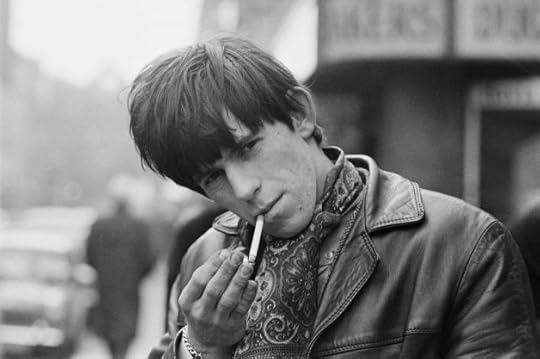
My masterpiece stroke was when a British band sampled one of the songs I own, and after it became a hit, I sued them. They eventually had to give 100% of the royalties to my company, and then I took their recording and sold it to Nike, who used that song over and over again in a series of commercials. It was the flawless series of moments for me. I know people say bad things about me in front of my back (and sometimes to my face) but you know, my piggy bank is getting fatter, in fact it is overflowing with coins - coming out of its mouth - I’m OK with the world. “Don’t talk to me about ethics. Every man makes his own. It’s like a war. ”
Published on December 18, 2014 12:30
December 17, 2014
December 17, 2014
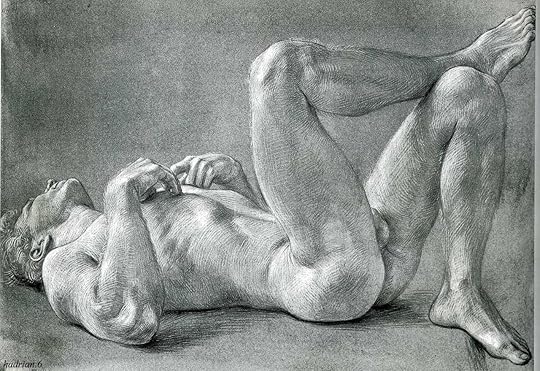
December 17, 2014
Being separated from my true love, is a harsh existence. I came upon a passage by the Goncourt brothers that put it in perspective: “Today I begin to understand what love must be, if it exists. When we are parted, we each feel the lack of the other half of ourselves. We are incomplete like a book in two volumes of which the first has been lost. That is what I imagine love to be: incompleteness in absence.” After reading this passage by the brothers, I read a touch more about them. Not only did they write books together, but they also didn’t spend more than a day apart from each other. Even in death, the brothers are buried together, and in the same grave in Montmartre Cemetery.
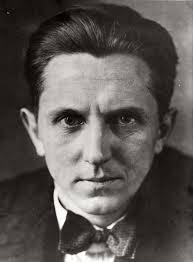
My wish is intended to be buried with my wife. I have no desire to be separated from her, either in life or death. As of now, I’m facing a house that is full of items, but lacking the presence of her, and I go to bed in an empty right side, where I sort of made a pillow to resemble a human form. I wake up realizing that I’m still alone, and I face every room in the house, and just count the echo of my steps I hear when I walk down the hallway. The only way I can work around this is to make it into a theater piece. At first, I wanted it to fill the void that I’m feeling now, but alas, it will expose the void, and as its author, I want the audience to be aware that they are watching the play. I want to make something so I can watch it as well.
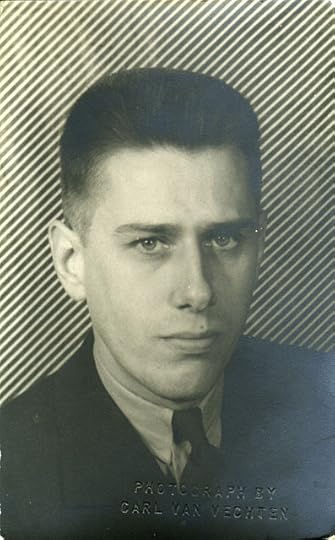
To project myself onto a wall, or on a piece of paper - to go out and explore … to avoid the void. When I was a younger man I had a job as a model for the artist Paul Cadmus. He would have me naked, and I remember the feeling of his eyes approaching me. It wasn’t instant, but more in a series of moments as I can feel his eyes looking from my toes to my knees, to my genitals, and eventually my face. I had a good body, and I even had a job as a lifeguard at the beach. That is where Paul first saw me, and approached me to be his model. Although the drawings and paintings were quite sexual, I never felt he was trying to seduce me personally. Then again, like the theater up above, when I took my clothes off in front of him, I felt like my soul or consciousness was somewhere in that room. I was watching him watching me, as he focused on the piece of canvas or drawing paper in front of him.
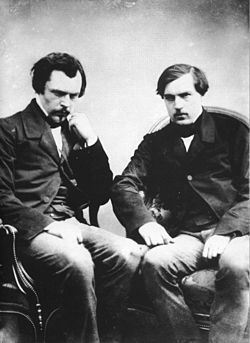
I think back to those times, because it was before I fell in love, and eventually becoming a husband. I took my marriage vowels seriously, and the fact that I never wanted to stand apart from her. Before she recently left, I gave my wife a print by Paul, that he drew of me. I just wanted to show her that I had another life before I met and married her. We are often shocked that we had a “life” before we met. We are shocked that there was even a “life.” Alas, therefore a theater of loneliness. I will write it, perform in it, and of course, watch it.
Published on December 17, 2014 11:12
December 16, 2014
December 16, 2014
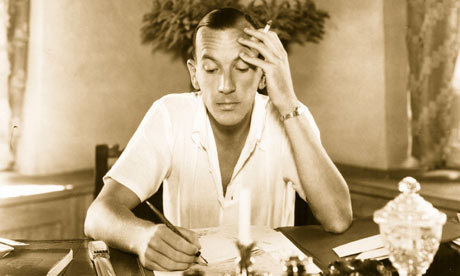
December 16, 2014
I have such a sad face, and I ‘m not sure if I was placed on this world to laugh or cry. Somewhere in my past, I did get to the fork in the road, and I chose laughter over crying. I don’t see the point of wasting tears, when it can be utilized for watering a devalued forest. The truth is, at one time, I had a great deal of money. I spent it all, mostly on pleasure of all sorts, than practical uses. Or I should say my practical uses were women, wine, and vinyl collecting. I have this odd collection of every recording possible of Beethoven’s 7th Symphony. The conductor Thomas Beecham made this comment about the third movement of this symphony: “What can you do with it? It’s like a lot of yaks jumping about.” Still, the second movement is surely the greatest piece of music ever. The movement being so popular also gives it a sense of sin, so it’s “strange how potent cheap music is.”
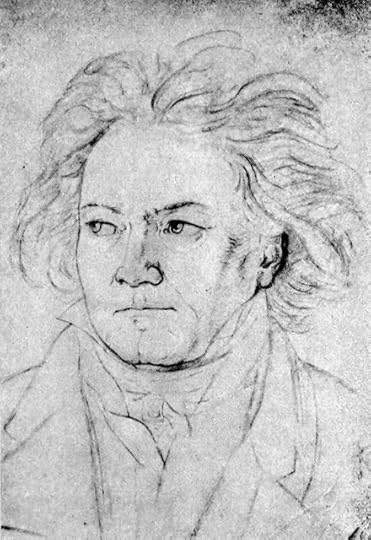
With the 7th Symphony as my personal soundtrack, I wander through my life from one disaster to another - yet with my chin up, I just try to stay true to my roots. I often develop intense crushes on girls that I can’t afford. The scent of promise that is them as they walk by, is too much of an allure for me. I remember being fixated on one, that was extremely beautiful and young, and all I could think of is the possibility of her giving me a hand-job, while she’s wearing her finest dress. I would also require that she wore no underwear as well. I have this obsessive set of rules when it concerns my sexual practices. I can imagine it is very difficult for the female in question to follow through my specific acts of desire. I eventually have to go out and pay for these services. It’s very dispiriting, but at the same time, I know when I do pay for the service, I get what I need. Supply and demand. Surely I’m not the only one in the world that has specific needs?
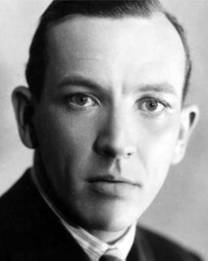
Yet, I can’t wait till the world comes to me, alas I must come to the world. "To create a work of art is to create the world." I used to have anxiety attacks about losing all my money, but now that it is gone, I feel lightheaded and free. I can no longer afford a woman like I'm accustomed to, and I have to pretty much depend on Trader Joe’s wine supply for my thirst, but I’m still standing and writing. “Everything starts from a dot.” After that my imagination runs free on whatever landscape I choose for my narrative. The thing is I have to use the same determination of wanting pleasure from a woman and transforming it into a desire for writing or creation. “What I adore is supreme professionalism. I’m bored by writers who can write only when it’s raining.”
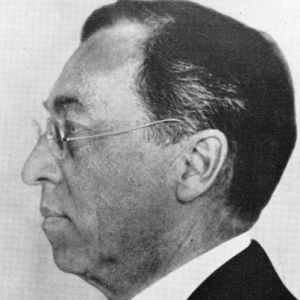
I dress up as much as possible, even though I don’t see people any more. But it’s imperative to make an appearance in front of my work-space, in other words, my laptop. All I have in this world is my laptop, and that is not by choice, but by my new-found poverty. I lived fully, expensively, and now I'm left with a head full of memories that will lead me on to hopefully, a future of some sort. Although thinking that a series of “memories” will lead me to a future, seems to me to be an absurd joke of some sort. “I have a memory like an elephant. In fact, elephants often consult with me.”
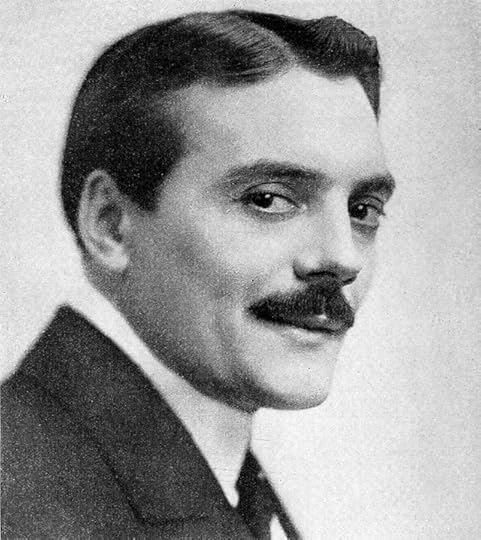
Nonetheless, now, looking outside my window, and watching the rain, I know that I just have to overcome that. A moment of sadness when I’m writing a comedy. My life cannot possibly be regarded as anything else but a series of comedic moments, played out by the biggest fool on this planet. What I do remember are past pleasures that appear to be nothing but a flicker on a 16mm projection. Wealth cannot only be measured by currency. The taste of women, and I remember every taste, every unique scent - which rolls around my tongue even as I write at this moment. I know I leave myself open to ridicule, but this is all I can offer at the moment. “I’ll go and see anything so long as it amuses me, or moves me. If it doesn’t do either I want to go home.” Home being the 7th Symphony and my laptop. So dear reader, do read and remember, “I love criticism just so long as its unqualified praise. ”
Published on December 16, 2014 12:20
December 15, 2014
December 15, 2014
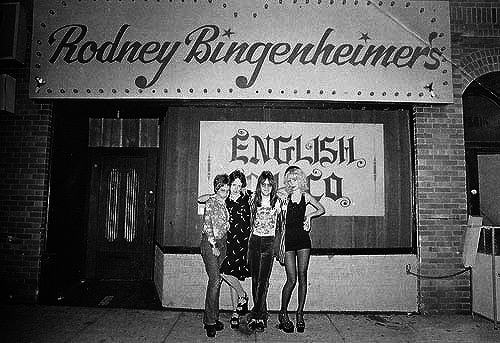
December 15, 2014
When you’re 19 or 20, you just want to ball pretty girls. I came upon them at Rodney Bingenheimer’s English Disco on Sunset Bouvelard. Most, if not all, the pretty girls I knew in High School, went to Rodney’s every Saturday night - and sometimes week nights as well. The amazing thing was that these girls I took classes with became totally eroticize when they went to the club. Spending time with them during regular school hours, they seemed to be edgy, like they were confined in a cage. During the daylight hours they were restricted, but as soon as nighttime became a fact, they turned their lifestyle around - to something that was very important to them. What was essential for me, was to be there at the right time and place, so I can get laid.
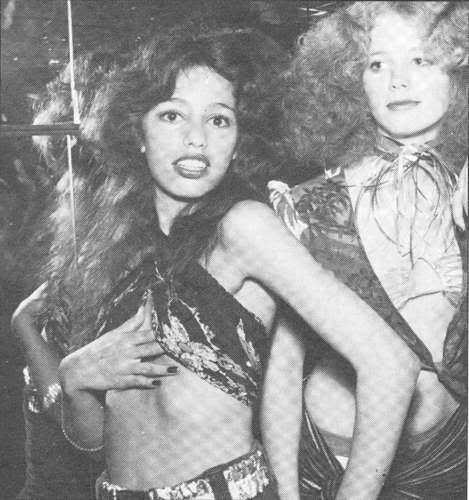
For a heterosexual male, and being slightly (and sometimes much) older than the girls who frequent the English Disco Club, was like utopia in the making. I remember the teenage girls, because each one was beautiful, but oddly enough I have no memory of teenage boys being there. If they were there, they appeared to be gay. More likely if you were a straight male, you were older, and horny. The only other club that teenage girls went to was the Sugar Shack in North Hollywood. In theory it was only opened for teenagers, and they served soft drinks. Not saying one can smuggle liquor inside the club and when no one was looking, putting it in the paper cups, and mixing it with Diet Coke. Once they’re slightly buzzed, it is onward to Rodneys.
It appeared that all the chicks got their make-up from Judy’s, which was to be found in all the malls in Southern California. I was just so hungry for ass, that I would drive my class-mates to Judy’s and just stood by their side as they chose their favorite nail color and eyeliner. Some of these girls, I grew up with them, and it’s interesting when they turn from friends into a monument for lust. Once that bridge has been crossed, I never looked back. The one (and a very big) problem was that I was very shy and insecure about my looks. At the time, the girls I knew were not going out or balling guys like me, they were focused on the visiting musicians from the U.K., or at first, the local musicians. Most of the musicians I knew, had much younger girlfriends. And at the time, it wasn’t the scene to move in together, but more likely the girls were still living at home. In my case, that home was the Valley. That specific region of Southern California seemed to process the most beautiful girls, and all the pretty one’s ended up at the Sugar Shack and Rodney’s club.
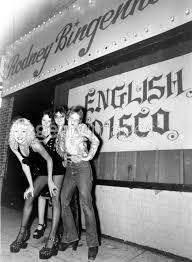
I have always loved glam rock. I think it has to do with the beat. On one level it makes me think of Bo Diddley, but I feel the main influence for the glam sound is the Dave Clark Five. Those recordings from the 60s could easily fit in with the glam sound of the 70s. What I remember is hearing the ‘beat’ as the girls danced in front of the floor to ceiling mirrors. Most, if not all, were looking at themselves as they danced to T-Rex, Bowie, Sweet, Cockney Rebel and so forth. For me, I felt like such a voyeur watching them shake their young asses to the mirror. I can picture myself as a painter, perhaps even Henri de Toulouse-Lautrec, when he painted the can-can girls in the working-class ballrooms of Montparnasse. But here, on Sunset Bouvelard, I can have all my five senses attached to what I see in front of me. I just want to ball all night, and let my self go.

Sadly it didn’t happen. As I mentioned the girls usually went out with musicians, or more commonly, older guys who were connected to the “musicians.” Photographers, agents, or anyone close to the rock n’ roll world, got ass, and as being noted: Rodney got laid more than Robert Plant. So, that left me sitting here in the club, and watching myself in the mirrors, watching the girls, who were watching themselves.
Published on December 15, 2014 10:37
December 14, 2014
December 14, 2014
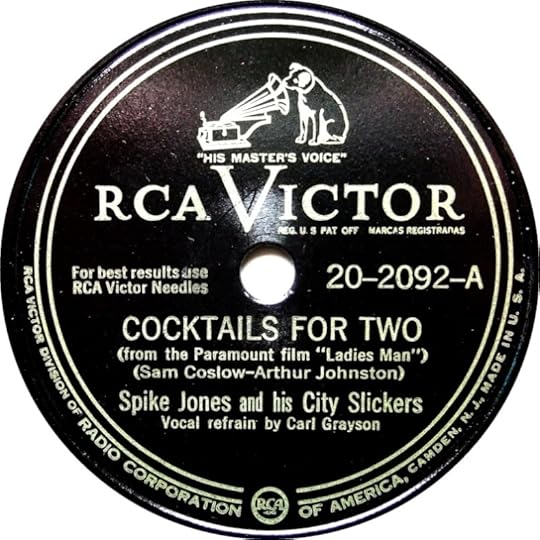
December 14, 2014
The quiet is deafening. Starting today, I lose contact with the one I love. I usually use the phone app “Line” to stay in touch with her, but she is in a location where she doesn’t either have a cell phone or access to the Internet. All quiet on the Western Front. All quiet in the house. To make the room more lively, I have been playing music by Spike Jones and his City Slickers. The way he looks and sounds is so far removed from my world, that playing this album, is like a foreign presence in my life. I eventually lose track of my reality, and enter into his world. My favorite recording by him is “Cocktails for Two, ” which was originally a romantic song, but in his possession it becomes a mockery of romance and love. Yet, when I hear the lyrics: “Most any afternoon at five/ We’ll be so glad we’re both alive / Then maybe fortune will complete her plan/ That all began / With cocktails for two” - I find myself in misery, because around that time it is cocktail time, and there is only a reservation for a table for one.
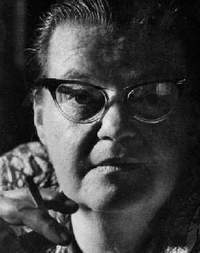
“No live organism can continue for long to exist sanely under conditions of absolute reality.” I obtain a faint memory of a life that I feel rather nostalgic now, thinking of it. The ritual of getting up in the morning, and here I worked on the living room table, and she comes out of the bedroom into my arms, for a good morning. We open the window shutters to let the sunshine bath us with its rays, but since she’s gone, either by design or fortune, there is nothing but clouds.
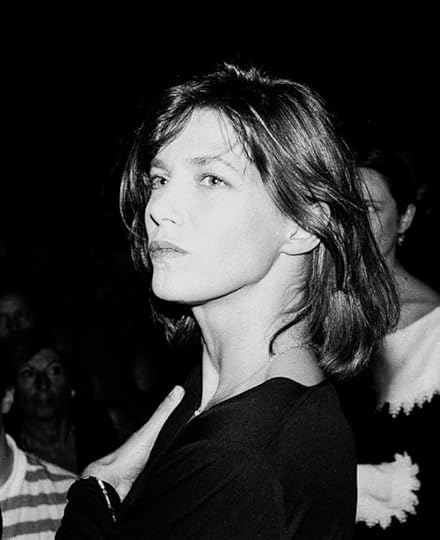
I shop, I look, I pretend to do stuff, but I’m not here or there. I look at my cell phone as it sits on the desk attached to a cord to a wall-socket. I keep it there in fear that I will lose power or battery the moment she calls - but alas, I know this is only a fantasy on my part. “Am I walking toward something I should be running away from?” Who knows? I taste my loneliness as if it was the most expensive bottle of wine. I savor the memory as I let the taste roam around my tongue. She made me a bag to keep all my loose ends - I am sort of like a woman who needs her bag more than anything else in life. But since she’s gone, I don’t feel compelled to bring the few objects I need when I leave our house. I feel empty, so I want to become empty-handed as well.
“I delight in what I fear.” It’s the only thing, that keeps me fully alive. The separation could be visualized as a vanishing point. I look in the distance, thinking I may see her. But what I see are the things by the side of my vision. It’s a tunnel that I want to run into - but I know I’ll never reach the other side. But yes, one can still imagine that there is a destination in that tunnel, where eventually I’ll reach the one I love.
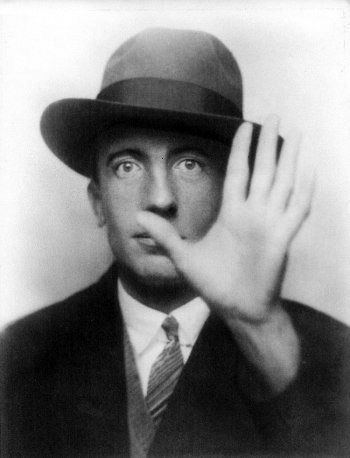
“Her head falls asleep in my hands / Where are we / Together inseparable / Alive alive / He alive she alive / and my head rolls through her dreams.” - Paul Éluard
Published on December 14, 2014 09:51
December 13, 2014
December 13, 2014
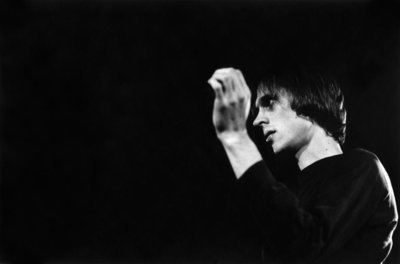
December 13, 2014
I have heard of the band “Television” and was an immediate fan, even though I never heard their music at the time. I remember seeing there was a photograph of Tom Verlaine and Richard Hell, around 1974, in Andy Warhol’s magazine “Interview.” I was struck at first by their haircut, and second, their clothing. I also liked how they posed themselves in what looks like a couch. There appeared to be something intimate between them, but I didn’t feel it was sexual, but more of a common interest in one’s beauty. History has indicated that they would not remain together, but alas, those series of moments were blissful. Along with Interview magazine, my father also had a subscription to The Village Voice, which at the time was a mirror to anything that was interesting in the world. Which in two words was: New. York.

Just by looking at a series of images of the band over the ensuing months, made me make-up my own soundtrack to what they may sound like. I presume they were loud, with a lot of guitars. By reading the various reviews in The Voice, I couldn’t get a realistic idea of what they actually sounded like - all the descriptions were quite poetic and there was no clear reference to other types of music. I figured they were on the avant-garde side with melody. Once my father was finished with the issue, I would take it and cut out the pictures of Television, or specifically Tom Verlaine. I was (and still am) a huge Richard Hell fan, but Verlaine was (and still, to this day) a mystery to me. Numerous people I have met over the years have commented that he’s a strange man. They never use the word ‘eccentric’ but that he was very ghost-like, and very much in his own manner, a perfectionist. He was likewise a poet, and the fact he changed his name from Miller to Verlaine, while the other brother-in-arms, had his name changed to Hell. Since I read French poetry, I immediately got the connection between them and Paul Verlaine/ Arthur Rimbaud. At the time, I thought that was such a perfect thing to be done in a rock n’ roll context. The other thing I liked about them was their song titles - specifically “Blank Generation, ” and “Little Johnny Jewel.” I tried to imagine what it sounded like just by reading the two song titles over and over again. As the poet Heinrich Heine commented: “Where words leave off, music begins. ”
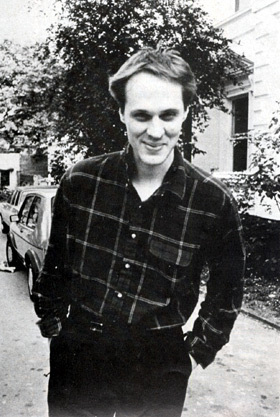
It may have been in 1976, that I purchased the 45 rpm single of “Little Johnny Jewel: Parts 1 & 2” on Ork Records. Seven minutes or so of perfect bliss. I have never taken heroin, but what I have heard is that once you shoot up, especially the first time, you get a sense of warmth. I get that by just hearing his voice, and the scratching guitars building to an intense final. At the time, I thought it was the greatest piece of music ever on vinyl. It was cinematic, in that it placed images in my head. The song itself is sketchy, in that it reminds me how Thelonious Monk played with a melody. Just by outlining it, like it was a pencil drawing on a piece of paper. Or maybe by tracing the melody through tracing paper. It’s transparent, and the opening words: “Little Johnny Jewel/he’s really cool/ had no decisions,” kicked the door down, and I’m wondering if I’m on the same landscape as Verlaine and company. I’m in another world. That is exactly what i like about art in general. I want to remove myself to a place that is on another plane, but I want to view my body down below.

At first, “all I really want is enough to live on, a little house in the country … and a tree in the garden with seven of my enemies hanging in it.” But that all changed when I heard Tom Verlaine, Richard Lloyd, Billy Ficca, and Fred Smith (who replaced Hell). Around the same time, I also purchased Richard Hell’s EP, which was magnificent as well. So in 1977, my life tragically changed, but I now have the soundtrack to the road to hell (no pun intended) and back.
Published on December 13, 2014 11:44
December 12, 2014
A Review of "The Death Instinct" in THE PARIS REVIEW
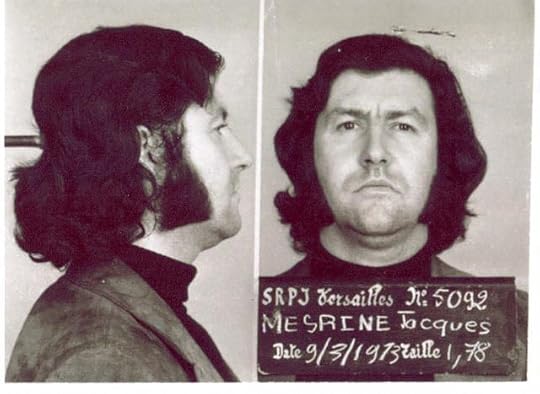 A review of Jacques Mesrine's "The Death Instinct" translated by Catherine Texier and Robert Greene in The Paris Review. You can read it down below:http://www.theparisreview.org/blog/2014/12/12/the-death-instinct/
A review of Jacques Mesrine's "The Death Instinct" translated by Catherine Texier and Robert Greene in The Paris Review. You can read it down below:http://www.theparisreview.org/blog/2014/12/12/the-death-instinct/
Published on December 12, 2014 18:02
December 12, 2014
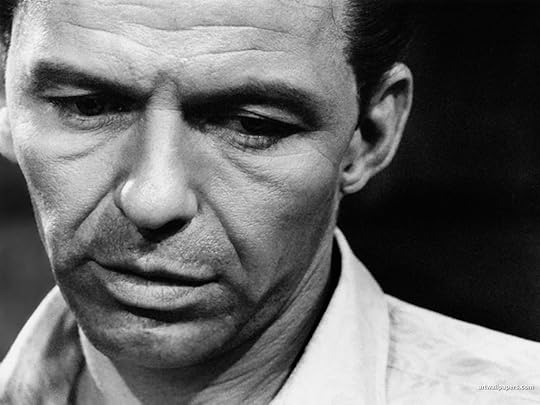
December 12, 2014
“I go dreaming into the future, where I see nothing, nothing. I have no plans, no idea, no project, and, what is worse, no ambition.” The emptiness I try to transform it into something of “vague” just so I can see its form in some fashion or another. The fear I have is that I will only see a blank canvas in front of me, and I wouldn’t have the slightest idea how to fill that void. It is not merely the object that’s in front of me, but also what it says about myself. Nothing. When I do die, and I will, I plan to put the Japanese kanji 無 on my tombstone, which means “nothingness. ”
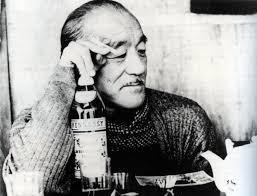
“Go on - but don’t think you can kill my confidence. I’ve had experts doing it for years.” Sometimes that is all I think I have, surely not talent. Asking me as a working writer (ha!) “what I think about critics is like asking a lamp-post what it feels about dogs.” The hardest part in my life is waking up in the morning and facing the day knowing that more likely it will be a form of failure in some way. A British playwright once was quoted as saying “There’s no such thing as failure - just waiting for success.” If that’s the case, I have been waiting for a long time. It is difficult to continue to tell people that you’re working on a project, yet, no one sees it. Therefore it doesn’t exist. Yet, I swear it does exist because it is right here in front of me. What will take courage on my part is realizing that the work won’t change my life, nor my lack of fortune. I will always be at the mercy of kindness - but that is only dished out a few times of the year. The rest of the time is preparing oneself for bed, knowing the next day will bring no fresh fruit, but rotten food to the table.
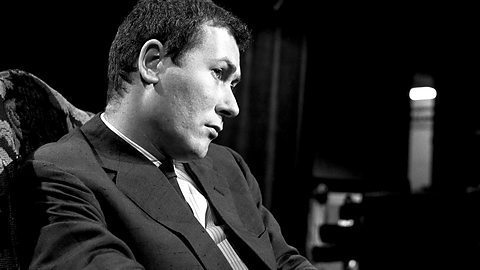
“I wanted things that I couldn’t at times articulate.” Bread, butter and a piece of fruit - perhaps a glass of wine or two. “Basically, I’m for anything that gets you through the night - be it prayer, tranquilizers or a bottle of Jack Daniels.” I want to travel gently into the night, but the way my world is made-up, it is more likely a series of car accidents. The broken romances, are painful, because they represent a sense of hope - but alas, it turns into someone’s cigarette smoke. As you watch the smoke, it is like a staircase going up to the ceiling, and then noticing it that it will disappear into the air. The point of no return is when I notice that there is nothing in the back of me, and in front, is that void. All my senses tell me to jump ahead and to take the chance that is in front of me. “The one way of tolerating existence is to lose oneself in literature as in a perpetual orgy.” My only hope is that salvation or a series of moments where I will shine. Otherwise it is being grateful for the rotten food on my table.
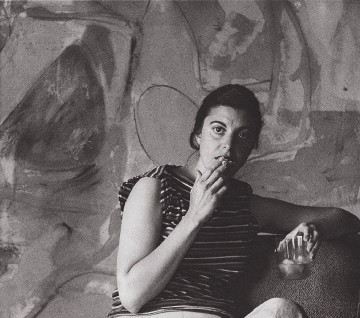
Published on December 12, 2014 11:41
December 11, 2014
December 11, 2014
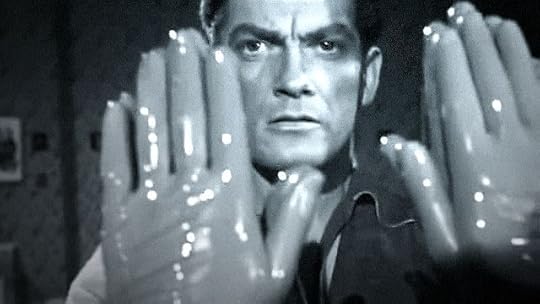
December 11, 2014
When it comes to the difference of disgust and the awe of beauty, I usually find disgust only skin deep. Even the worst of the worst, there is some quality of ‘something’ that can make a person attractive. Ugliness is something one can take for granted. It will more likely be there forever, till the person’s death. There is never anything sad about ugliness. On the other hand, seeing someone of remarkable beauty turning slowly, either by age or illness, into ugliness is truly horrifying. To be ugly from the very beginning is an indication of good character. Beauty to me is always suspect to hide something that is truly vile.
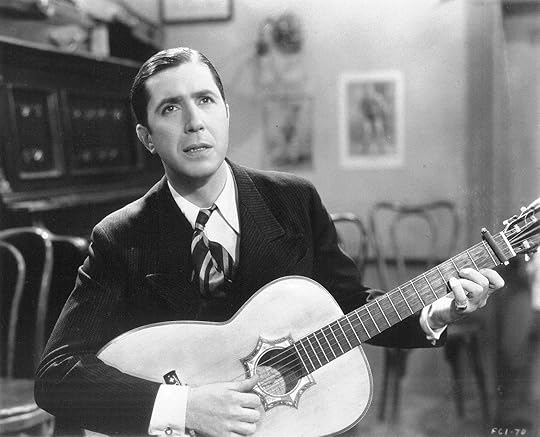
For me, personally I have never ever seen an ugly woman. I don’t think they exist! On the other hand, I have seen horrendous looking men, either by their looks or their design. I, for instance, am border-line beautiful and … ugly. When I was younger, I was truly handsome. I even noticed the woman would turn my way when I walked down a busy avenue. Now, that I’m older, I only notice middle-aged men looking at me over as I walk the lonely street of Glendale Boulevard. As I get older, I feel strongly attracted to women who are younger than me. Yet, I barely get a glance from them these days. In their eyes, I’m somewhat pathetic looking, or a rose that existed too long in the garden. I obviously need to be clipped from the rose branch and placed in a book as a marker for a bitter love poem. Or perhaps a lyric from the great tango singer and songwriter Carlos Gardel. Even he, who died young, was aware of the lessening powers of male beauty fading into a black hole. “The snows of time/ they whitened my temples/feel/That is a breath of life’That twenty years is nothing…”
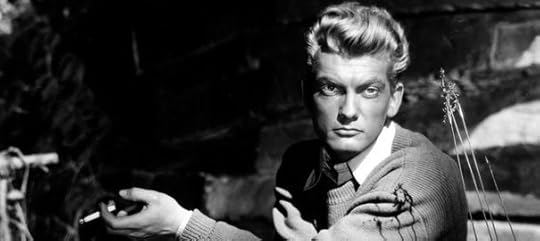
“Life is unfair. I got nothing but the best.” Till now. Life has reclaimed me as truly a skin deep beauty. I first realized the moment when I caught my reflection from a mirror in the hallway. I have statuette hands attached to the wall all along the hallway, which each contains a mirror, mostly for only decorative purposes, but I have to admit I do look, as I walk down the hall from my work space to living room. I shouldn’t have looked back, because the reflection can be seen as me in another life, or is it from the underworld?
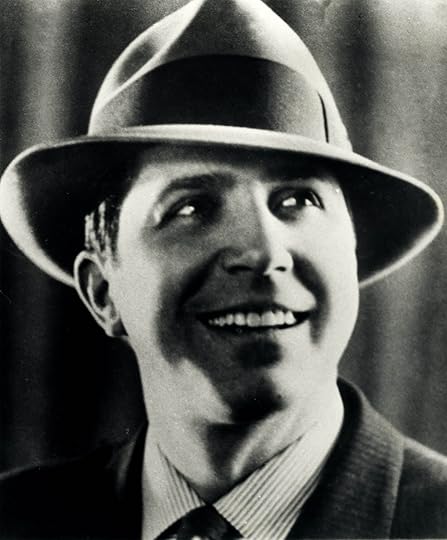
Age and poverty are taking its toll on me, and I’m barely holding on to a life that I once imagined. I can barely go out, not due to health, but more with the thought of beautiful people surrounding the public areas that I normally go to. A world without ugly is not a life at all.
Published on December 11, 2014 11:51



